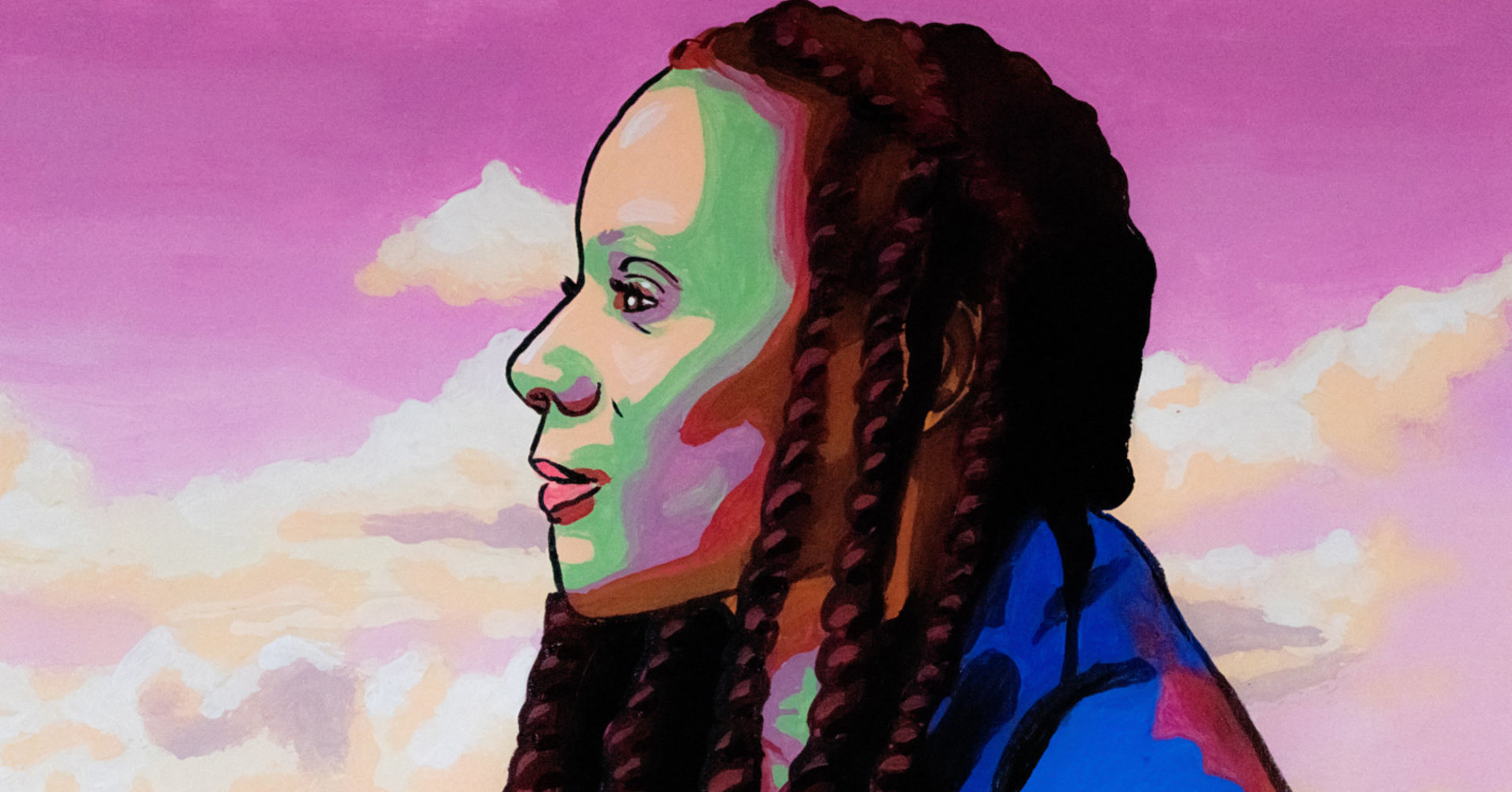[ad_1]

Elizabeth Colomba has a simple mission: to create detailed, thoughtful Western history paintings with black women as the main characters. If you look at any of Colomba’s paintings, you’ll see regal black women draped in gorgeous attire — lush Victorian gowns, intricate dresses made of Ankara or elaborate silk garments — posing for their portraits. Your eyes will meet the eyes of the protagonist and you will be drawn into whatever story Colomba is telling.
Spanning history, mythology, the feminine sacred and allegory, Colomba’s paintings use old masters’ techniques to meld her traditional art teachings with the women of the diaspora. Black women, in Colomba’s world, have become the focal point in a class of art where they were long depicted as subservient — if at all.
As a black woman, it is impossible for me to gaze on Colomba’s work and not feel seen and honored. Her portrayals of black women are intimate and rooted in our humanity. It is, in its way, a political act. For Women’s History Month, I chatted with Colomba about the power of curtailing stereotypes and making your presence known in spaces where you’ve long been excluded.
This interview has been edited for length and clarity.
Your work kind of sparked this project that I’m blessed to be doing. What sparked your desire to center black people, especially black women, in period pieces?
There are two moments. The first time, I went to the library. I was a big fan of going to the library, and I was doing research. I was looking at all the books, and I saw these two volumes of The Image of the Black in Western Art which, since then, has been reprinted by professor [Henry Louis] Gates. At the time it was out of print, but it was in this library. And I looked around me, and I looked at all the books — rows and rows of books — and just seeing the histories of representation of black people only contained in two books, when I could see all of these other books around me, I just thought: “That’s not enough.”
You know, I was born and raised in France. I went to art school in France. I was trained classically. And I never really thought about black people in that manner because I had never seen it — being schooled in a very white way.
There’s another moment when I went to the Louvre and we were visiting the classical parts, the 18th-century parts, and I stumble upon “Portrait of a Negress,” which was the first time I had seen in real life a classical painting entreating a black subject. And I was in awe. I just decided, “OK, maybe I should focus on this,” because it meant something to me. And I decided to re-create a history where a black body is shown in a different way. It’s like I’m vocalizing myself as part of a history where we’re not present.
That’s one of the things that stood out to me about your work — along with the fact that you never Westernize us. When I see the black women in your paintings, we have black features, we’re wearing head wraps and our hair is kinky. Just beautiful black women portrayed as black women and not in a way that makes white people comfortable. We often don’t see that. How would you explain the power in refusing to reimagine black women as anything other than black?
It’s powerful for black people, but what’s interesting is it’s also powerful for white people in another way. The reaction can be — they can embrace it or you can feel some of them recoil because it’s something they don’t want to see. They don’t want to be reminded of black women being black, really. There’s power in embracing who you are, your history, what you look like, and not trying to pretend to be somebody else. And there’s a lot of power in sitting in your place and making moves for yourself.
Absolutely. Just to go off of that, how would you say your work diminishes stereotypes?
Given the representation in the past of black people, where they’re usually represented as subservient or always echoing a white presence, it’s shattered in the way they are embracing their own space. They take up room in their own space. You don’t think of black people in those kinds of environments, wearing those dresses, having this kind of narrative around them at that time. When you think about black women wearing a period dress, you have a tendency to think that they were serving other people, another ethnicity, and they were not in power. That’s where I break the stereotype. And that’s what sometimes makes people uncomfortable.
These women in your paintings are not subservient at all. They’re sitting on these very beautiful, lush couches. They always strike me as being wealthy women — and we don’t see that. It’s so amazing.
At the time when people were asking for a painter to make their portrait, or commission their portrait, it’s because they had the money to be able to commission something like this. And they also had the time. You imply that you’re coming from a wealthy background. So that representation, of being in a beautiful environment, dressed beautifully, means you’re wealthy. That’s an association that I want more and more, really.
Yes, same. So how do you conceptualize these pieces? Walk me through your process. Where do these ideas come from?
Well, I do inspire myself from themes. So it could be biblical, it could be mythological, it could be allegorical, and some of my paintings are based on historical figures who really existed. But I always start with a theme, and from that theme I build the narrative with iconography. I put objects around them that will support my theme. For example, whether it’s an animal, whether it’s a color, whether it’s an object — all of these tell the story of the character who is represented in the painting. I do a lot of research fashion-wise and furniture-wise, pattern-wise, and also a lot of research iconographically, meaning what’s the meaning behind this object beyond what you see. From there, I do a sketch or a study, and then I build my painting from that.
And my last question for you is: What inspires you?
There’s many things that inspire me. I would say women artists who paved the way before me. Right now, I’m part of an exhibition at Gracie Mansion, and that covers a hundred years of women’s work. And just seeing this evolution of the woman’s place in society and how her status as an artist was not the same status as today. We still need to do a lot of work to really equalize a woman and a man in the arts world. But this exhibition is very inspiring because it helps give the courage to go, “Oh, if they made it, of course you made it.”
Quotes can inspire me. And, of course, I look back also to old masters’ paintings and techniques.
I read about historical characters. Again, I have some paintings that were sparked by people who fought hard for the cause just by being there — like Sissieretta Jones, who was an opera singer. Just her presence, in a way, was a fight. The fact that she managed to be the first black woman who sang at Carnegie Hall is something great, considering the time. So all these stories and all the back story inspire me today, for sure.
[ad_2]
Source link

